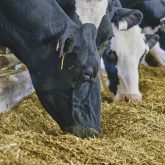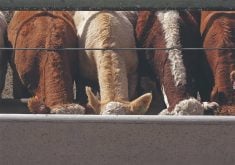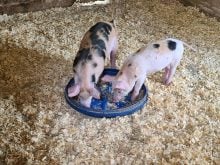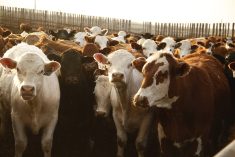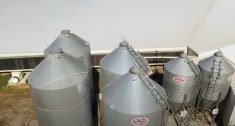Glacier FarmMedia – Farmers and the animal nutrition industry should think as much about what comes out of an animal as what goes in, according to many at the recent Animal Nutrition Conference of Canada.
Amid demands to restrict greenhouse gas and nutrient emissions from all forms of livestock, feed makers must ensure that animals get all they can from macro and micronutrients to reduce the amount of harmful substances that end up in the air, water and soil.
Why it matters: Despite great gains in feed efficiency, the livestock sector is still perceived as a contributor to environmental degradation.
Read Also

Dissolving eartags could make pig traceability easier
A dissolving eartag for market hogs, called Clean Trace could reduce processing challenges and enable more individual management of pigs.
“They look at livestock and see pollution,” said Melissa Dumont, executive director of the Animal Nutrition Association of Canada, summing up widely held public and government attitudes toward agriculture.
Those attitudes result in scrutiny and demands upon the feed industry that are relentless and sometimes wrongheaded, said some researchers and scientists.
“The pressure on us … is absolutely immense,” said British feed scientist Emily Burton of Nottingham Trent University. “It’s the assumptions that annoy me most as a nutritionist.”
The livestock and feed industries are proud of the ever-increasing efficiency of meat production. Per-kilogram greenhouse gas emissions and environmental impacts have fallen significantly in recent years.
For example, the U.S. hog industry claims it now has an eight per cent smaller environmental impact, uses 75 per cent less land, consumes 25 per cent less water and runs on seven per cent less energy than 50 years ago, while producing more meat.
Each healthy pig or steer today produces more pounds of gain with fewer emissions than ever before, while preserving grasslands and consuming materials that would otherwise be waste, industry representatives said.
However, millions of people believe livestock production is a primary cause of climate change, water pollution and soil degradation.
Some have pushed back against what they consider misperceptions of net livestock emissions, but virtually all feed companies and researchers now include sustainability as a key metric when considering advances they want to build into feed sources and practices.
Before the official opening of the main conference sessions, a full morning was dedicated to researchers focused on boosting livestock sustainability with better feeding.
Sessions on getting to “net-zero livestock production” and turning pledges into concrete sustainability results for pig and dairy cattle producers drew more than 400 attendees. American and Dutch experts challenged the feed industry to take micronutrient impact, efficiency and waste more seriously.
There’s stress on researchers to improve livestock sustainability, and it appears a stream of young researchers are keen to enter the industry. Dozens of graduate students from Canada, many from non-Canadian backgrounds, attended the conference.
The student researcher presentations, in posters and from the stage, were popular with more seasoned researchers, and the conference sprinkled student participation through the event.

African Youth in Canadian Agriculture was represented. It is a new national organization attempting to connect African students in Canadian high schools and universities to opportunities in agriculture.
An example of how African-origin researchers are finding places in Canada’s feed industry was seen in University of Saskatchewan graduate student and researcher Roseline Ogory, who presented her work on incorporating ahliflower seed and cake in chicken diets to produce better omega-3 content in eggs.
The notion that there are still radical gains to be made in livestock feeding efficiency ran through the conference. University of Saskatchewan swine nutrition scientist Dan Columbus highlighted the relative lack of study on sow nutritional needs and the crude manner in which sow diets are supplied, which mostly ignore the animals’ cyclical needs.
Researchers feel pressure to feed animals more sustainably, but many also said they are optimistic about future discoveries in sustainability and efficiency.



